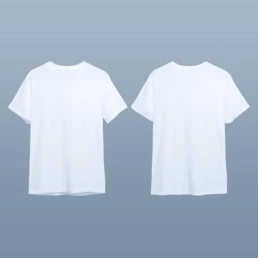The four main pillars of qualitative research
Why is a specific product consumed in a specific situation? An accurate understanding of deeply held attitudes, perceptions and behavioural patterns is at the core of qualitative research projects. A true, in-depth understanding that looks beyond simple answers given by the respondents can only be achieved with the appropriate research methods.
Specific research topics include:
- Understanding deeply held values and attitudes
- General mindset and knowledge as regards a specific range of products/services
- Analysis of needs
- Detailed exploration of usage patterns (e.g. specific usage occasions, triggers for usage of specific products or services)
- In-depth understanding of purchasing processes (encompassing the entire customer journey)

Does an intended message actually reach its designated recipient, and how is it decoded? Analysing how a company communicates with an intended target group is undoubtedly one of the most fascinating fields of qualitative research.
Qualitative research can be conducted at different stages of developing communication measures:
- Analysis of basic concepts of a communication strategy (at the outset of developing a concept)
- Qualitative pre-testing (e.g. of advertisements, posters, TV commercials, online content, brochures etc.) to acquire as much input as possible for the implementation of specific communication measures
- Qualitative post-testing, that is to say, a basic analysis of the effect mechanisms of adopted communication measures (e.g. also of various providers)

To what extent does a product meet the actual needs of the test persons? Especially in the case of new offerings and services, qualitative studies have become an inherent part of product development, usually in combination with a general insight study of general needs and behavioural patterns.
Similar to communication research studies, different types of qualitative studies can be conducted at different points in time:
- Analysis of basic concepts of new products (as regards comprehensibility, basic relevance of new ideas, positioning in the existing competitive environment etc.)
- Detailed analysis of specific products/services and their particularities/features (e.g. evaluations of design, material, logo and name)
- Qualitative usability tests (detailed understanding of concrete usage of a product or specific services in a setting that is as realistic as possible

What position does a brand hold in the existing competitive environment? Besides quantitative brand tracking studies, qualitative branding studies are indispensable in terms of gaining the required depth of understanding of the essence of a brand.
The topics below can only be investigated in detail by applying qualitative studies:
- Associative space of a brand
- Entrenched visual elements (icons, codes, colours etc.)
- Characteristics of a brand
- What and which values does a brand stand for?
- Brand personality
- Analysis of touchpoints
- Understanding how a brand is positioned in the competitive environment

Methodological approaches
Qualitative individual explorations are conducted primarily when specific held beliefs, perception processes or behavioural patterns are to be examined on an individual basis, in greater depth.

Main Advantages
- Excellent exploration opportunities to examine individual patterns
- No influence by other persons
- A generally agreeable setting for the respective test person (so that topics potentially viewed as taboo can also be discussed)
- Easier recruiting (particularly relevant in the case of difficult target groups, such as high-net-worth individuals (HNWI), B2B area etc.)
Used primarily for
- Insight/motive studies
- Ethnographic interviews
- Analysis of the communication performance of specific measures (advertisements, posters, websites et al.)
- Generally for target groups that are difficult to recruit (e.g. B2B, HNWI etc.)
Features
- Between 20 and 60 individual explorations per study
- Duration: approx. 45 minutes to 2 hours
The aim of focus groups is to gain additional input from the discursive course of the discussion. The focus is not primarily on the individual, but on exploring the group as a whole (for instance, how decision processes come about within such a group etc.).

Main Advantages
- Group processes are well suited for analyses
- The group context is a particularly good way to approach more complex and/or more abstract topics
- Timewise, the field research can be conducted in a highly focused manner
Used primarily for
- Concept evaluations (Product- or communications concepts)
- Branding-/positioning studies
- Political studies, to comprehend the process of opinion forming
Features
- Concept evaluations (product or communication concepts)
- Branding/positioning studies
- Political studies, so as to acquire an understanding of opinion-forming
With this research approach (often also referred to as ‘Concept Labs‘), the findings obtained in the course of the research process are continuously incorporated in the test material under examination. This method can be very useful, especially at the outset of a concept development.

Main Advantages
- Facilitates further development of concepts/ideas during the research process
- A form of co-creation with consumer reactions flowing directly into the product/concept development
Used primarily for
- Concept developments (product or communication concepts) that are still at a relatively early stage
Features
- Usually implemented by means of focus groups
- As a rule, in approximately four focus groups
For certain research questions, it can be advisable to combine ‘classic‘ qualitative approaches with a preceding eye-tracking to gain an even more comprehensive understanding of the perception processes.
Main Advantages
- Complementing qualitative analyses with measured eye-tracking data
- Combination of qualitative analysis with a device-based method
Used primarily for
- Advertising evaluations (e.g. posters, advertisements)
- Website evaluations
- Perception of POS presentations
Features
- Brief preceding part, usually in combination with in-depth interviews
- insight uses Tobii products for this (www.tobii.com)
Discussions with two or three test persons This can be useful if decision-making processes are to be analysed within a particular constellation (e.g. within a household).

Main Advantages
- Decision-making processes within smaller groups can be easily understood
- In contrast to ‘regular‘ focus groups, the individual participants can contribute more to the discussion (expert panels are a case in point, where a small group or even pairs/triads should be opted for)
Used primarily for
- Analysis of decision-making processes within a household
- Children’s market research (in many cases, children will be interviewed together with a parent)
- Expert discussions
Features
- Explorations with two or three test persons
- Quantity: roughly between 12 and 30 pairs/triads
- Duration: between 60 minutes and 2 hours
‘Classic‘ qualitative explorations are often accompanied by other methodical approaches, always aiming to acquire a full, holistic picture of the test person.

More specifically, these approaches can be
- Insight/motive studies
- Use of new products at home
Used primarily for
- Insight-/motiv studies
- Usage of new products at home
International Research
We have extensive experience with conducting international qualitative studies. We cooperate closely with a broad network of selected partner institutes in Europe, America and Asia.
Our partner institutes and their experienced moderators have an in-depth understanding of local markets. Close and regular cooperation paired with lean structures enable insight to conduct qualitative multi-country studies professionally and efficiently.
A personal project leader of insight is always on-site to ensure that our high quality standards are met at all times.

World

